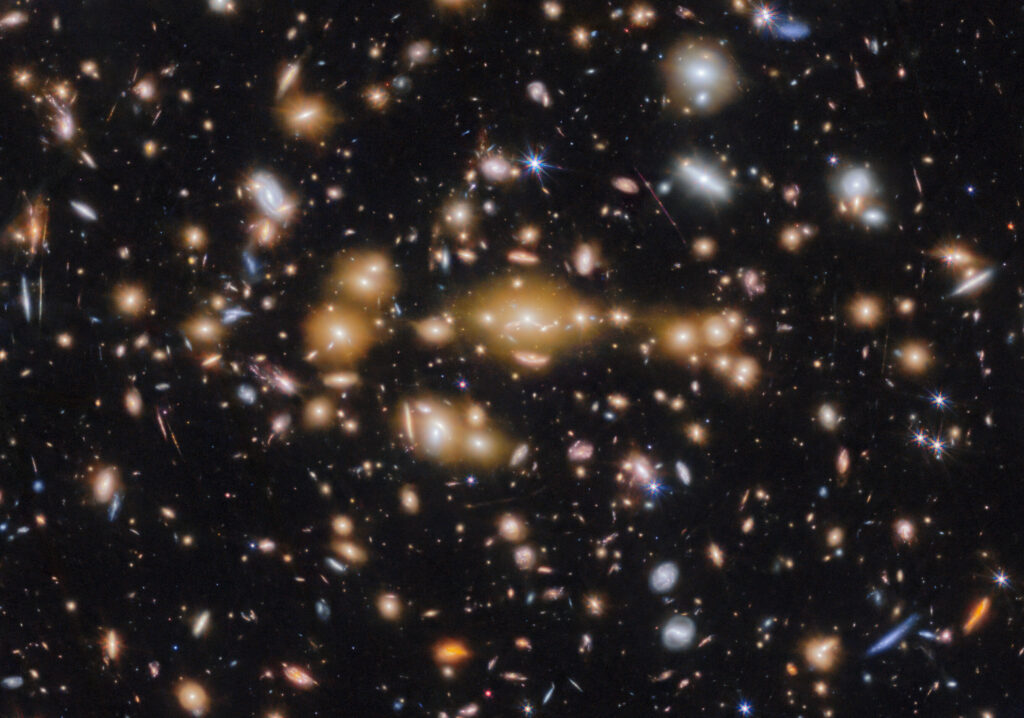An international team of astronomers used the James Webb Telescope (JWST) to detect the most distant gravitationally bound star cluster known to us. It existed when the age of the Universe was only 460 million years old, or 3% of the current age.

Young galaxies that formed shortly after the Big Bang were very active in forming stars, generating large amounts of ionizing radiation in the process. However, due to their cosmological remoteness, direct studies of their stellar populations have been a very difficult task for astronomers until recently.
To their rescue came “space treasures”. We are talking about the Cosmic Gems galaxy, which was originally discovered by the Hubble telescope in 2018. Under the action of gravitational lensing from another, closer galaxy, its shape is distorted and in the images resembles a shining arc.
This discovery turned out to be quite fortunate for astronomers. The fact is that the Cosmic Gems galaxy is located at the very edge of the observable Universe. We see it only just 460 million years after the Big Bang.
Astronomers took advantage of this unique opportunity and used the high sensitivity and angular resolution of JWST to look at the details of the “arc”. In total, they were able to detect five young massive star clusters. They are massive and very dense — the number of stars in them is about three orders of magnitude greater than in similar-sized star-forming regions closer to Earth. They account for most of the ultraviolet light emitted by the Cosmic Gems galaxy.
According to the researchers, the discovery contributes to a better understanding of the process of reionization of the Universe and the formation of globular clusters. And the high density of stars in these ancient clusters allows us to take a new look at the processes of formation of very massive stars and black holes.
Earlier we told you about how James Webb found the most distant supernova.
According to ESA


